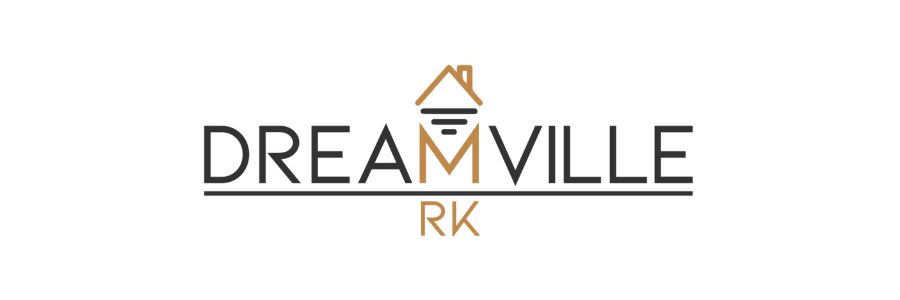In the Czech Republic consumer prices moderated their growth for the second time in a row reaching 15% in March 2023: -1.7 points since February
Year-on-year inflation development by sector
Inflation in the Czech Republic remained below 5% for a large period of time until 2021 when it started to rise disproportionately, peaking at 18% in September 2022, as can be seen in the graphs below:
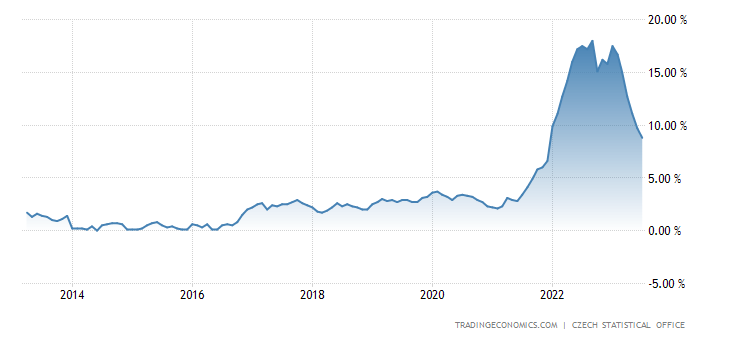
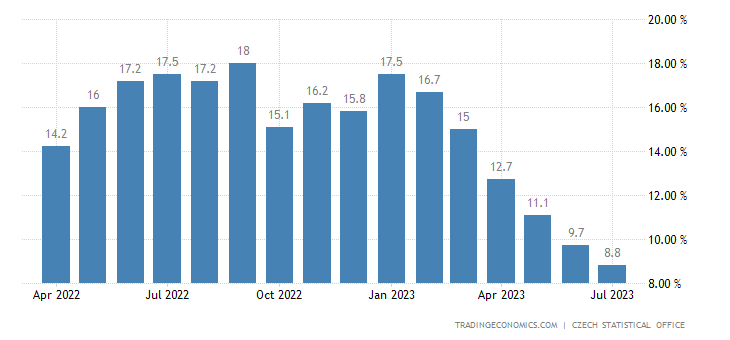
(source: tradingeconomics.com)
At the moment, as depicted in the second picture, consumer prices moderated their growth for the second time in a row to 15% in March 2023 (1.7 percentage points less than in February), which is the lowest figure since last April (14.2%). This slowdown in year-on-year price growth was mainly influenced by prices in the transport and construction sectors. In fact, in the transport sector, fuel and oil prices decreased by 19.0% in contrast to February’s increase (+0.4%). Similarly, in the housing sector, there was a slight decrease from 74.3% growth in February to a 60.0% increase. Thus, the biggest influence on the growth in the level of inflation was once again from the real estate sector where not only the costs of owner-occupied dwellings rose, but also flat rents, which specifically rose by 6.7%, products and services for routine flat maintenance by 16.4%, water by 16.3%, sewage by 30.3%, electricity by 29.6%, solid fuels by 53.7% and heat and hot water by 44.6%. After housing in order of influence are the prices of food and non-alcoholic beverages one example is rice with an increase of 32.9%, flour 32.6%, pork 34.0%, eggs 75.5%, and vegetables 29.9%. This is followed by the hotel and restaurant sector with growth of 19.1% and 21.5% respectively, and the recreation and culture sector by 24.6%.
Overall, the consumer price index excluding the cost of ownership of dwellings was 116.1%, goods prices rose by 17.0% and services by 11.7%. While the inflation rate expressed by the increase in the average consumer price index over the past 12 months compared to the average of the previous 12 months was 16.4% in March, it was 16.2% in February.
How inflation changed on a monthly basis
On a monthly basis, the overall level of consumer prices decreased in March due to lower prices in the real estate sector, where natural gas prices fell by 1.4%. The culture and recreation sector also saw a decrease (-4.5%) as did transport, mainly influenced by lower fuel prices. On the other hand, prices of goods and services increased by 0.1% and 0.3% respectively, with clothing and footwear also up (+1.4%). In the food and non-alcoholic beverages section, prices of vegetables increased by 5.0%, pork by 2.2%, and non-alcoholic beverages by 1.2%. Again, in the food and accommodation section, prices increased by 0.9% and 2.5%.
The inflation rate of January and February 2023 in the Czech Republic:
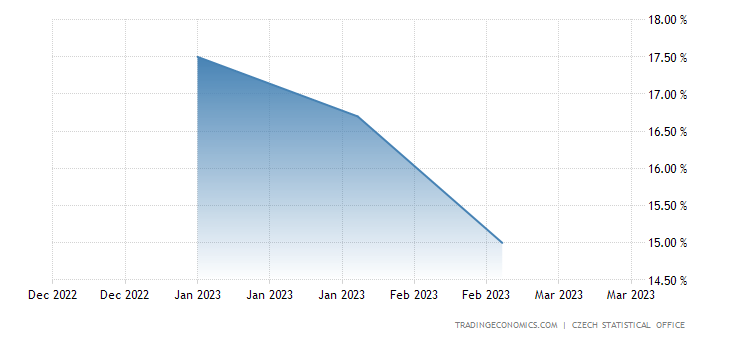
(source: tradingeconomics.com)
Harmonised Index of Consumer Prices in the Eurozone
The HICP, i.e. the Harmonised Index of Consumer Prices, in the Czech Republic increased by 0.3% on a monthly basis and by 16.5% on an annual basis in March in contrast to 18.4% in February. According to Eurostat’s estimates, the year-on-year change in the HICP in March was 6.9% for the Eurozone (8.5% in February) and again according to Eurostat’s preliminary data, the year-on-year change in the HICP of the 27 EU Member States was 9.9% in February, i.e. 0.1 percentage points less than in January.
The graph below shows the Harmonised Index of Consumer Prices in the Czech Republic from April 2022 to March 2023:
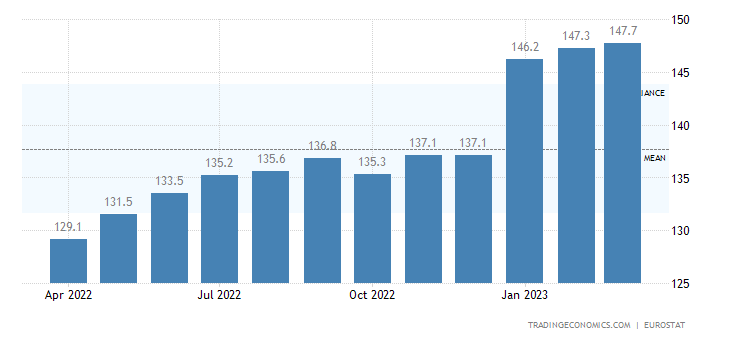
(source:tradingeconomics.com)
Source: https://www.czso.cz/
Source of images: https://it.tradingeconomics.com/
Graphic Source: https://storyset.com/




